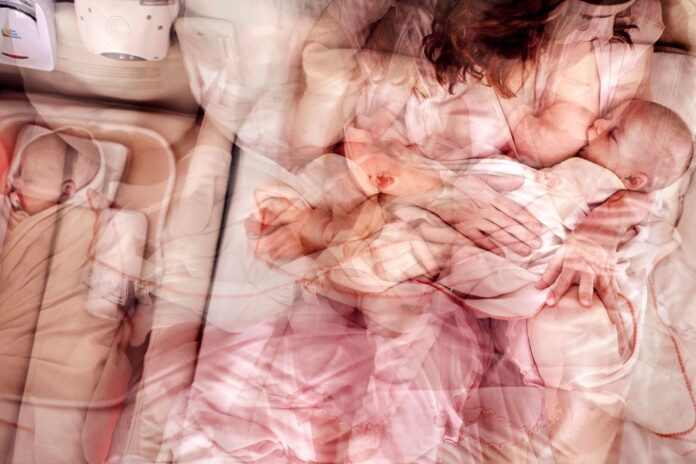“Control and chance are big themes in all my work,” says Tabitha Soren. The artist is trying to make images she’s never seen before.
“The act of photographing is a response to how I attempt to consciously manage the uncontrollable possibilities that exist in life. When I’m shooting, I’m not just accepting of imperfection. I’m looking for it,” she told 48hills.
Experimenting within the medium of photography, she changes materials, cameras, and subject matter often and says life’s unpredictability is central to her creative process.
Soren spent her youth moving around the world in an Air Force family, and has lived in three countries and 11 states. She spent her young adulthood in New York, graduating from NYU in 1989, then moved to Palo Alto for a fellowship at Stanford from 1997-’98. She found a way to live in the Bay Area permanently, in Berkeley, starting in 1999. She currently resides near the Berkeley Rose Garden.
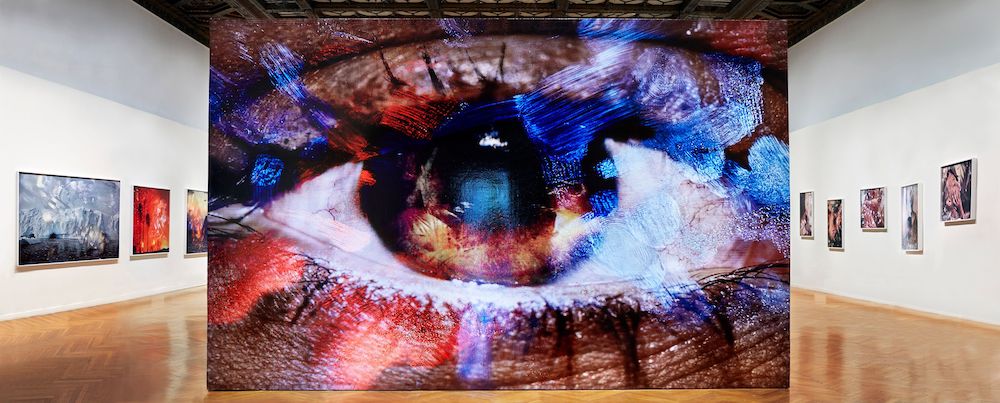
“I feel like the Bay Area is interested in supporting the careers of groups traditionally left out of the white male dominated art world. Middle-aged women are the kryptonite of the art world in a lot of places, but the Bay Area has the capacity to care more about the work than the gender of the artist. That’s encouraging to me,” Soren said.
She believes we still have a long way to go when it comes to gender equality, but does cite a list of female artists from the Bay Area like Lynn Hershman Leeson, Mildred Howard, Masako Miki, Squeak Carnwath, Tauba Auerbach, Clare Rojas, and Judith Belzer—to name a few—who inspire her to keep working hard.
Because Soren grew up in an itinerant military family, she had to make repeated adjustments to cultural differences, social structures, and visual cues. Each relocation shaped her in some way. Threat, as a daily part of life, is central to her psychology and to all of her work.
“I’m used to internal struggle and eventually it has turned into a level of empathy for others’ internal struggle. I’m interested in what we all manage to survive and what we don’t,” she said.
Help us save local journalism!
Every tax-deductible donation helps us grow to cover the issues that mean the most to our community. Become a 48 Hills Hero and support the only daily progressive news source in the Bay Area.
Soren remembered experiencing frequent monsoons while living in the Philippines. In Germany, helicopters would land on the front lawn and her family’s downstairs landlords were former Nazis. There were folders labeled “TOP SECRET” around the house. In Virginia, during her high school years, Soren lived in a house across the street from an airplane runway. Landings outside her bedroom served as her alarm clock.
“My dad was on something called ‘high alert duty’ once a month and he also attended ‘war college.’ Living on military bases, naturally, everyone around me was preparing for battle around the clock,” she said.
All of this, Soren said, illustrates how she was led to a true understanding of what it means to always be prepared. She is, still, always looking over her shoulder—and so are most of the figures in her creations.
She describes her work as psychological, tense, and sublime, and has long explored the intersection of psychology, culture, politics, and the body, both as an artist and in an earlier career as a TV news reporter.
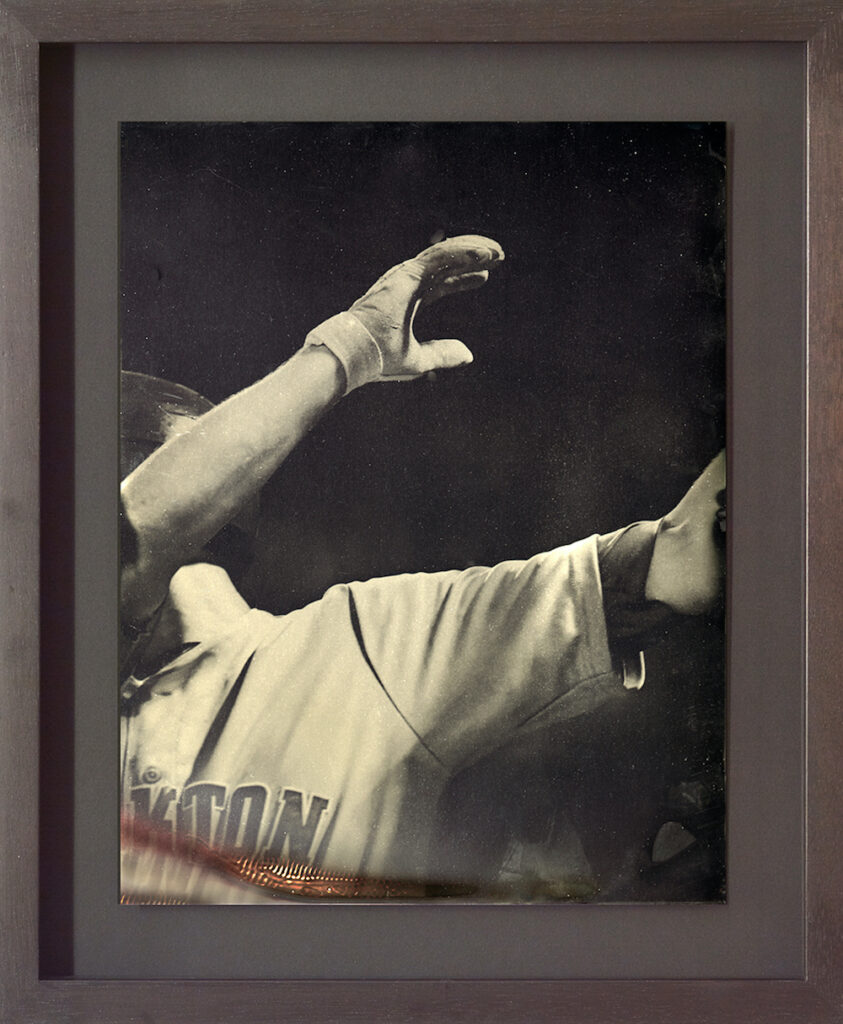
“When I began my career in television in 1989, I shot my own video footage. I gave up being my own ‘cameraman’ when I began covering politics for MTV News, shifting into directing the camera,” she said.
Soren was an on-air producer and reporter when she was awarded the Peabody Award for Excellence in Journalism in 1993 for her coverage of the presidential campaigns of Bill Clinton and George H.W. Bush. During her years in New York, she also worked for CNN, ABC News, and NBC News. When she was awarded a fellowship at Stanford, she shifted her visual arts practice from 30 video frames a second to single-frame photographs. Soren found that what she wanted to examine in television reporting was often lost on the cutting room floor.
“TV news requires a very true or false, black or white, ‘just the facts’ story. After over a decade of that, I found that I was yearning for a place of a more subjective, complex truth; one in which there was more grey area,” she said.
Soren feels her career now has much more opportunity for nuance. In her view, the aim of art is to ask the big questions. Specifically, she asks: How are we supposed to be living our lives? What are we put here to accomplish? What should we value? What is truth and how might we recognize it?
Soren said it has taken a long time to find the place from which she will make the art only she can make. The art which reflects her weaknesses, her obsessions, her peculiarities, the blind spots, “the whole deal.”
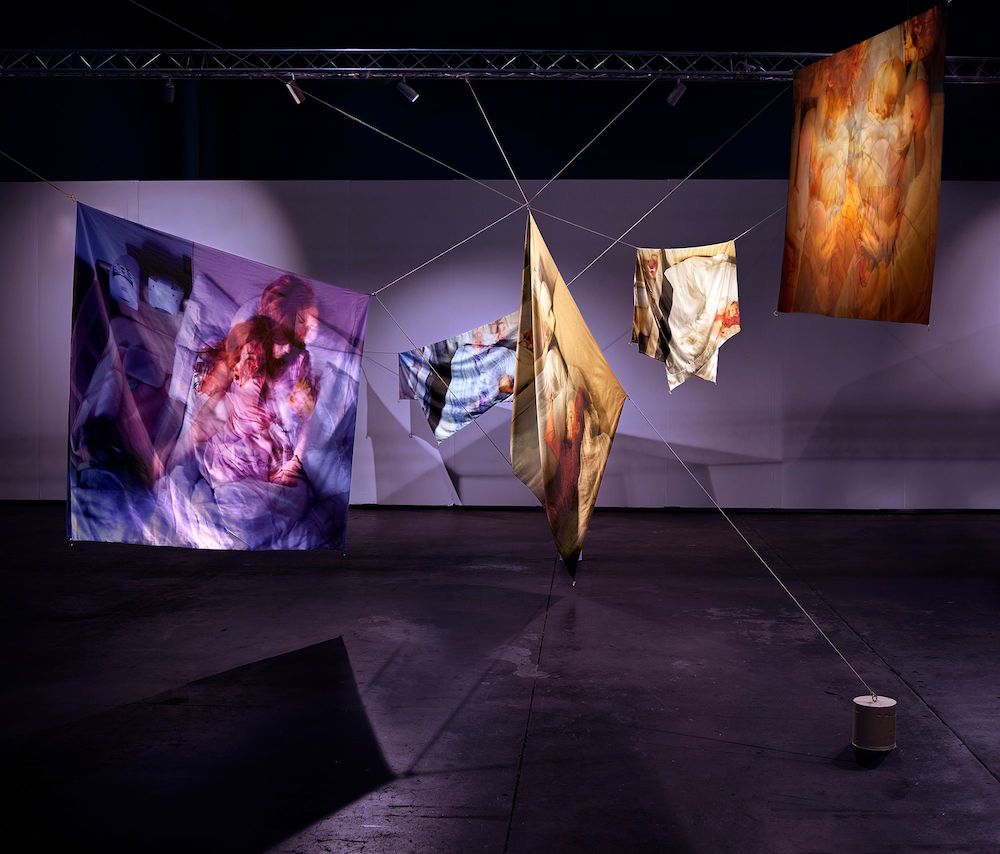
“I came to fine art because I wanted to visualize psychological states; the internal weather that storms through each of us. I believe art holds answers about the twists and turns of everyday living, but they are slippery, hard to grasp, and maybe ultimately, unknowable. That’s what makes art compelling to me. It is not a fact-based pursuit,” Soren said.
And Soren believes that she could not make the art she makes now without having worked with video and film first.
“My work has been described as cinematic and that’s why,” she said.
Her career has ebbed and flowed over the last few decades. She has been intermittently represented by art dealers. In keeping with the rhythm of her personal life, she has had highly productive periods and times when she was more absorbed by raising three children.
“Being an attentive mother always threatens to overtake being an artist. I suspect that’s why, for me, chasing down the photograph with a camera is usually just the first part of my process, the rest is completed in my studio,” she said.
Soren’s studio and darkroom are both strategically located at the end of her driveway in a redwood structure that resembles a cottage from The Hobbit, near enough to her house to hear a child scream (and they do, she said!)
Her two most recent bodies of work have been studio-based and very hand-made. Every year, she said, her work gets more tactile. Adding other materials on top of the photo, distressing the paper, or experimenting with the surface in some other way is part of a layering process that creates a tension between what is seen and what lies underneath.
“I want to see how the materials unfold when combined with photography. This experimentation provides the grey area, the nuance that I’ve been aiming for since I left TV. Getting away from the specificity of photography, the press of the shutter at the decisive moment, is where my work has been headed for a while,” Soren said.
But she added that it would be disingenuous to say caring for children all these years didn’t also change her practice from being someone hoping to capture a great picture to being a photo-based artist in a studio “up to her elbows in ink and resin, embracing the chance and messiness of what comes next.” Soren is exploring the expansive power of photography by pushing its material limits.
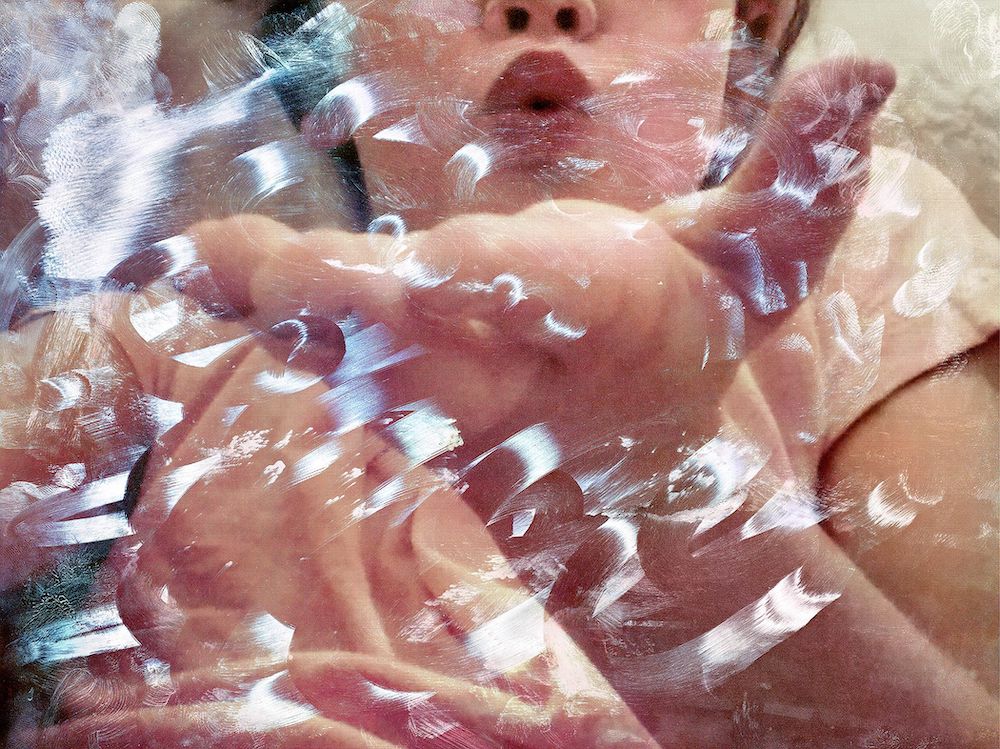
“This experimental approach to photography and materials goes against the silos of sculpture, painting, and photography in the art world. For the RELIEF series, I’m carefully juxtaposing scans from my environment with topographies and portraits, so they can become an alchemy of the imagined place. They are also 3D reliefs that allow viewers to see something handmade by the artist while still being a photograph made by a camera,” she said.
Her favorite thing about RELIEF is the shadow play the pieces create. Using cutting blades, carving knives, a pellet gun, bows and arrows, flames, and awls as tools, Soren said she is harnessing deeper meaning and clarity from signs we think we might know well.
Soren will have work in four institutional shows this year. Motherload is included in “On Art and Motherhood,” which opens in the UK at Bristol’s Arnolfini on March 9–June 2, then travels to Birmingham’s MAC June 26-October 6, and Millennium Gallery in Sheffield from October 24-January 21, 2025. Motherload is also included in “Designing Motherhood,” which opens at the National Design & Architecture Museum in Stockholm June 1–March 2025.
Surface Tension is included in “Touch,” which opens May 11–August 4 at New Jersey’s Princeton Museum. And Fantasy Life is included in the SFMOMA group show “Get In The Game” opening Oct 19 and running through February 20, 2025.
Soren thinks that with a lot of photography shows, one leaves with their eyes more open. It is her hope that when we leave one of her exhibits, that we do so with our hearts more open. She aims to describe not just the pockets of pain we live in, but the hope that led us there.
“The connective tissue through my artwork is visualizing the dark, moody, messy, and anxious states of the internal struggle,” Soren said. “I hope that bringing all those buried ‘unacceptable’ psychological states to the surface of an art object might help people feel less alone.”
Tabitha Soren is currently represented by Jackson Fine Art in Atlanta, Georgia. For more information, visit her website at tabithasoren.com and on Instagram @tabithasoren.

